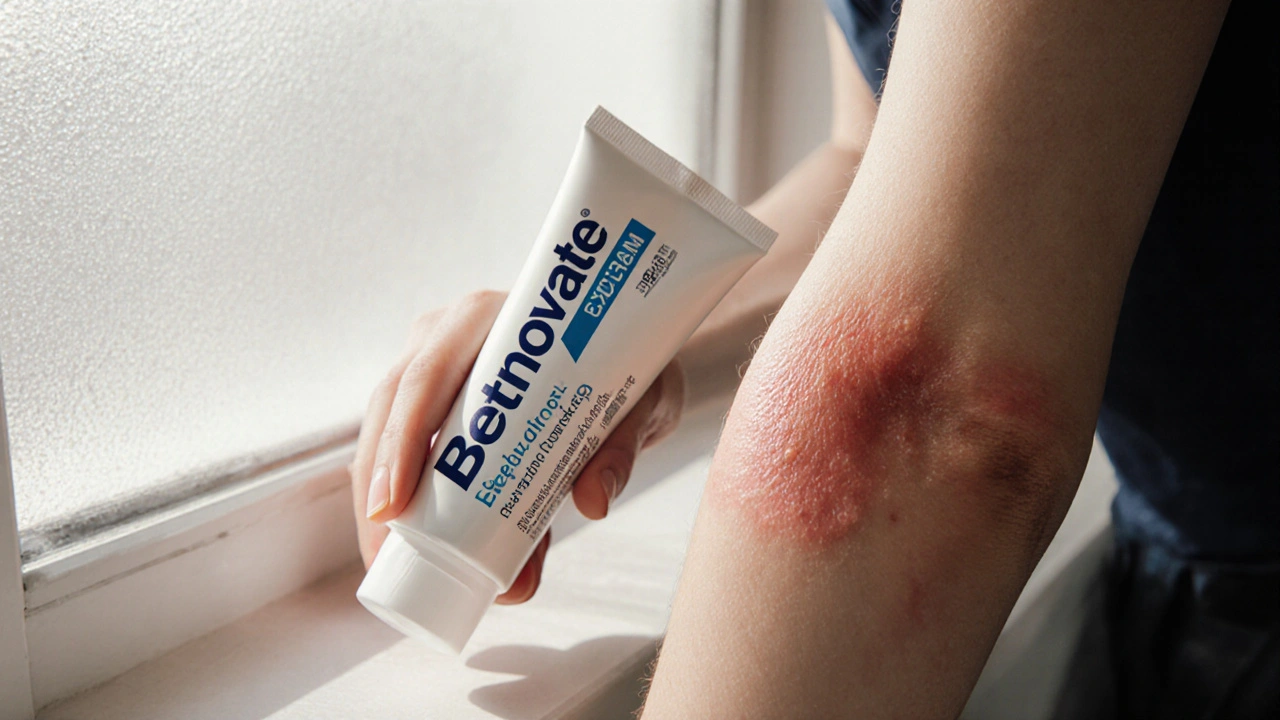Betnovate: What It Is, How It Works, and When to Use It
When working with Betnovate, a prescription‑strength topical corticosteroid designed for inflammatory skin conditions. Also known as betamethasone dipropionate, it reduces swelling, redness, and itching by dampening the immune response in the skin. Betnovate delivers a high‑potency steroid directly where it’s needed, making it a go‑to option for doctors handling stubborn rashes.
Topical corticosteroids, a drug class that suppresses inflammation when applied to the skin work by binding to glucocorticoid receptors, slowing the release of inflammatory chemicals. Their potency ranges from mild (hydrocortisone) to very strong (betamethasone). Because they act locally, they avoid many systemic side effects, but misuse can cause skin thinning. Knowing this class explains why Betnovate sits near the high end of the potency scale.
Psoriasis, a chronic autoimmune skin disease marked by thick, scaly plaques often requires a stronger steroid to break the cycle of cell overgrowth and inflammation. Betnovate’s high potency helps flatten plaques faster than milder creams, and doctors frequently prescribe it for plaque‑type psoriasis on the elbows, knees, and scalp.
Another common target is Dermatitis, inflammation of the skin caused by irritants or allergens. Whether it’s atopic eczema or contact dermatitis, the goal is to calm the itching and redness. Betnovate’s anti‑inflammatory action speeds symptom relief, but treatment length should be limited to prevent barrier damage.
Betnovate comes in three formulations: cream, ointment, and scalp lotion. The cream is ideal for moist‑rich areas like the face, the ointment for dry, thick plaques, and the scalp lotion for hair‑covered regions. Choosing the right base matches the skin’s texture and improves drug absorption—an essential attribute for effective therapy.
Safety starts with the right dosage. Apply a thin layer once or twice daily as directed, and wash your hands afterward. Avoid covering treated areas with tight bandages unless a doctor advises it; occlusion can boost absorption and raise the risk of side effects such as skin atrophy, stretch marks, or steroid‑induced acne.
If you’re switching from a milder steroid like hydrocortisone, taper the strength gradually to let the skin adjust. Conversely, stepping down from Betnovate to a lower‑potency product after the rash clears helps maintain results while minimizing long‑term risks.
Patients often ask how Betnovate compares with other high‑potency options such as clobetasol propionate. While both are strong, Betnovate’s dipropionate ester offers slightly better penetration in oily skin, making it a preferred choice for scalp and sebaceous zones.
Before you start, tell your doctor about any existing skin infections, diabetes, or immune disorders. These conditions can alter how the skin reacts to steroids, and a tailored plan may involve short‑term use combined with moisturizers or antifungal agents.
Armed with this overview, you’ll recognize when Betnovate is the right tool, how to use it safely, and what to watch for during treatment. Below you’ll find a curated collection of articles that dive deeper into related topics, from choosing the proper formulation to managing side effects and comparing alternative therapies.

Betnovate (Betamethasone) vs. Common Topical Alternatives: A Practical Comparison
A clear, side‑by‑side comparison of Betnovate (betamethasone) with common steroid and non‑steroid alternatives, covering uses, risks, and how to choose.